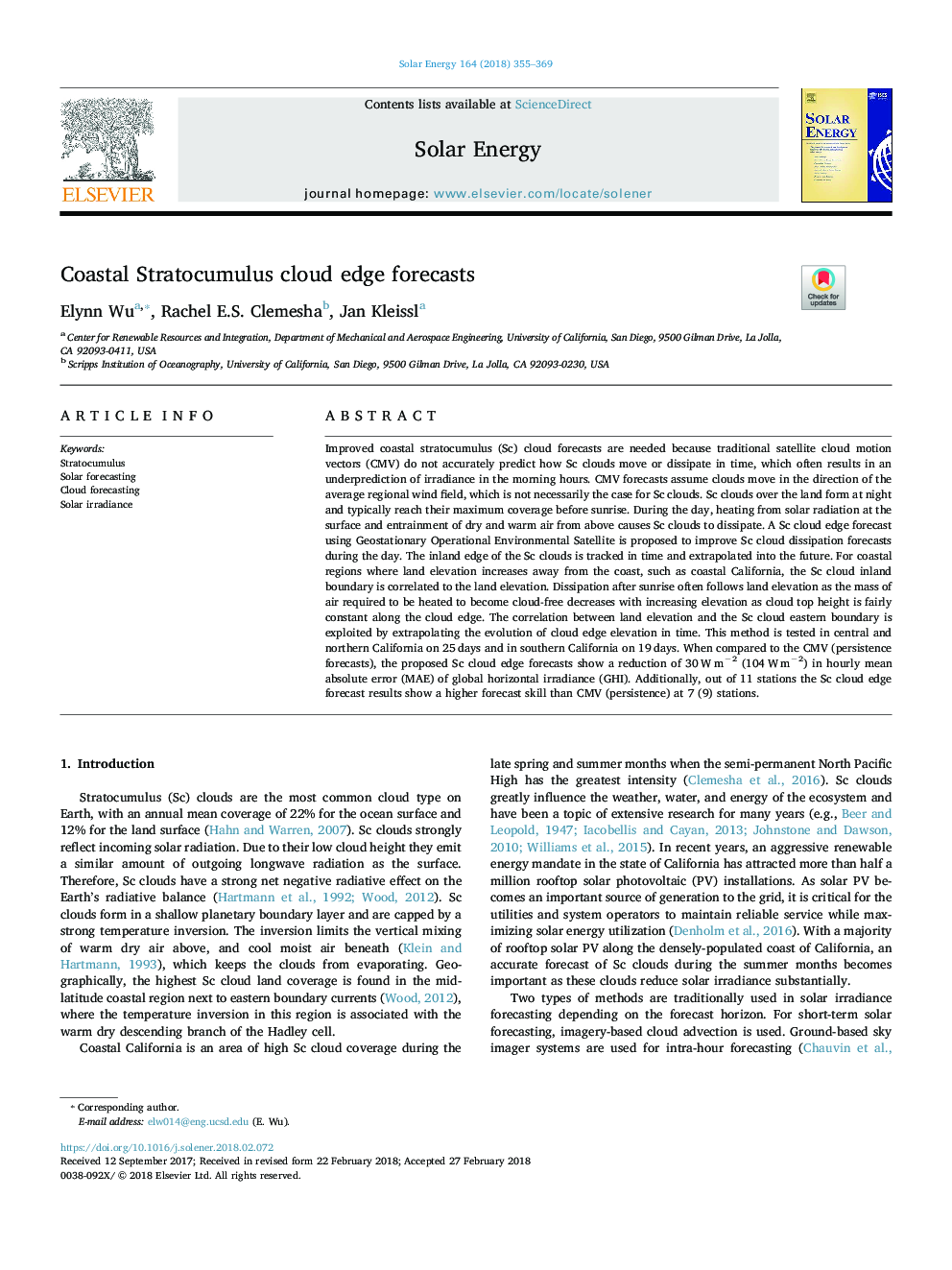| Article ID | Journal | Published Year | Pages | File Type |
|---|---|---|---|---|
| 7935453 | Solar Energy | 2018 | 15 Pages |
Abstract
Improved coastal stratocumulus (Sc) cloud forecasts are needed because traditional satellite cloud motion vectors (CMV) do not accurately predict how Sc clouds move or dissipate in time, which often results in an underprediction of irradiance in the morning hours. CMV forecasts assume clouds move in the direction of the average regional wind field, which is not necessarily the case for Sc clouds. Sc clouds over the land form at night and typically reach their maximum coverage before sunrise. During the day, heating from solar radiation at the surface and entrainment of dry and warm air from above causes Sc clouds to dissipate. A Sc cloud edge forecast using Geostationary Operational Environmental Satellite is proposed to improve Sc cloud dissipation forecasts during the day. The inland edge of the Sc clouds is tracked in time and extrapolated into the future. For coastal regions where land elevation increases away from the coast, such as coastal California, the Sc cloud inland boundary is correlated to the land elevation. Dissipation after sunrise often follows land elevation as the mass of air required to be heated to become cloud-free decreases with increasing elevation as cloud top height is fairly constant along the cloud edge. The correlation between land elevation and the Sc cloud eastern boundary is exploited by extrapolating the evolution of cloud edge elevation in time. This method is tested in central and northern California on 25â¯days and in southern California on 19â¯days. When compared to the CMV (persistence forecasts), the proposed Sc cloud edge forecasts show a reduction of 30â¯Wâ¯mâ2 (104â¯Wâ¯mâ2) in hourly mean absolute error (MAE) of global horizontal irradiance (GHI). Additionally, out of 11 stations the Sc cloud edge forecast results show a higher forecast skill than CMV (persistence) at 7 (9) stations.
Related Topics
Physical Sciences and Engineering
Energy
Renewable Energy, Sustainability and the Environment
Authors
Elynn Wu, Rachel E.S. Clemesha, Jan Kleissl,
